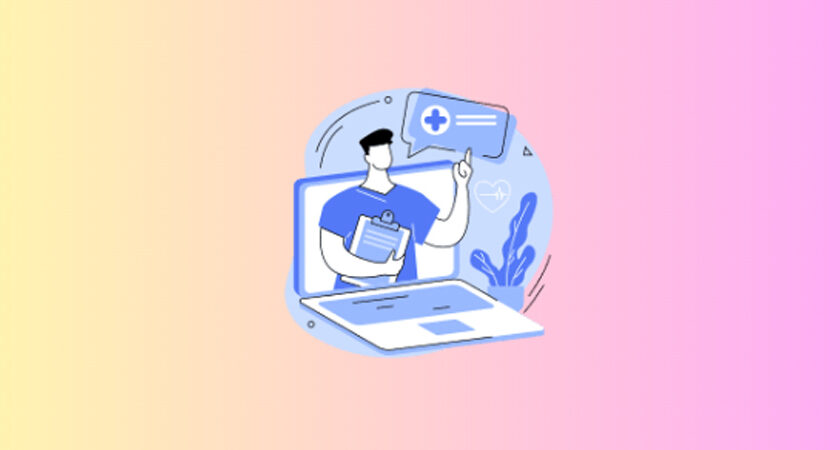The advancement of technology has brought about significant changes in various industries, and the healthcare sector is no exception. One notable transformation in healthcare is the introduction of Remote Patient Monitoring (RPM), a revolutionary approach that allows healthcare providers to remotely monitor and manage patients’ chronic conditions from a distance.
\RPM has proven to be a game-changer in chronic disease management, enhancing patient outcomes, reducing hospitalizations, and improving overall quality of life. In this blog, we will explore the concept of Remote Patient Monitoring, its benefits, challenges, and its potential to revolutionize healthcare as we know it.
What is Remote Patient Monitoring (RPM)?
Remote Patient Monitoring is a healthcare practice that utilizes technology to collect and monitor patient data outside of traditional healthcare settings. This data includes vital signs, biometrics, and other health-related information, which is then transmitted to healthcare professionals for analysis and interpretation. RPM employs various devices such as wearable sensors, mobile apps, and connected medical devices, making it easier for patients to manage their conditions and for healthcare providers to track their progress from a distance.
Enhancing Chronic Disease Management
Chronic diseases, such as diabetes, heart disease, hypertension, and chronic respiratory disorders, require continuous monitoring and management. Traditionally, patients with chronic conditions had to visit healthcare facilities frequently, which can be time-consuming, costly, and inconvenient. RPM offers a convenient alternative, enabling patients to remain in the comfort of their homes while healthcare providers remotely monitor their conditions.
Real-time Monitoring and Early Detection
RPM allows healthcare professionals to receive real-time data, providing a comprehensive picture of a patient’s health status. This enables early detection of any abnormalities or changes in a patient’s condition, allowing prompt intervention and reducing the risk of complications.
Personalized Care Plans
With access to continuous data, healthcare providers can tailor individualized care plans for each patient. RPM empowers patients to actively participate in their own care, leading to better adherence to treatment regimens and lifestyle modifications.
Reduced Hospitalizations and Emergency Room Visits
By closely monitoring patients’ health, RPM can help identify potential issues before they escalate into emergencies, reducing hospital admissions and emergency room visits. This not only saves healthcare costs but also improves patient quality of life.
Better Medication Management
RPM ensures better adherence to prescribed medications by tracking medication schedules and reminding patients to take their medications on time. This significantly reduces medication errors and improves treatment effectiveness.
Improved Patient-Provider Communication
RPM facilitates regular communication between patients and healthcare providers. Patients can ask questions and seek advice without the need for in-person appointments, enhancing patient engagement and satisfaction.
Challenges and Barriers
While Remote Patient Monitoring holds great promise, several challenges need to be addressed to realize its full potential:
-
Technology Accessibility: Not all patients have access to the necessary technology, such as smartphones or internet connectivity, which may hinder their participation in RPM programs.
- Data Security and Privacy Concerns: The transmission and storage of sensitive health data raise concerns about data security and privacy. Healthcare providers must adopt robust security measures to protect patient information.
- Reimbursement and Regulatory Issues: In many healthcare systems, reimbursement policies for RPM services are still evolving. Additionally, varying regulations across different regions can hinder the widespread adoption of RPM.
-
User-Friendly Devices: The success of RPM depends on the usability and user-friendliness of the devices and apps used. Ensuring that these tools are accessible to people of all ages and technology literacy levels is crucial.
Future Prospects of RPM
Despite the challenges, the future of Remote Patient Monitoring appears promising
-
Integration with Artificial Intelligence: The integration of AI algorithms into RPM can enhance data analysis, prediction, and personalized treatment plans. AI-driven insights can help healthcare providers make more informed decisions and improve patient outcomes.
- Expanded Coverage and Adoption: As healthcare systems become more familiar with RPM and its benefits become clearer, we can expect wider coverage by insurance providers and increased adoption across healthcare organizations.
-
Population Health Management: RPM has the potential to transform population health management by enabling proactive interventions and health promotion at scale. Identifying patterns in patient data can aid in early identification of disease outbreaks and facilitate targeted public health interventions.
Conclusion
Remote Patient Monitoring is reshaping the landscape of chronic disease management by leveraging technology to empower patients and enhance healthcare providers’ capabilities. With real-time monitoring, personalized care plans, and improved communication, RPM offers a patient-centric approach to chronic disease management.
While challenges remain, ongoing advancements in technology and healthcare policies will undoubtedly pave the way for a more interconnected, efficient, and patient-focused healthcare future through Remote Patient Monitoring. As RPM becomes more widespread, its positive impact on chronic disease management and overall healthcare outcomes will undoubtedly be felt far and wide.
